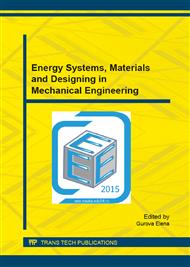p.428
p.433
p.439
p.446
p.453
p.457
p.462
p.468
p.476
Electrical Parameters of Induction System for Internal Cylindrical Surfaces being Heating
Abstract:
In the article the combined influence of surface effect, proximity effect, ring effect and slot effect on active and self-inductive resistances of the inductor, placed inside the hollow cylindrical workpiece, are investigated. It had been shown that the combined influence of these effects forms a distribution of current over cross-section of the inductor tube. That current determines the values of active and self-inductive resistances of the inductor. There had been presented dependencies of relative coefficients of active and self-inductive resistances of the inductor and relative geometrical parameters of the system "inductor – hollow finite-sized workpiece", the gap between the inductor and the workpiece, and specific resistance of heated nonmagnetic workpiece in presence and absence of internal magnetic core.
Info:
Periodical:
Pages:
453-456
Citation:
Online since:
September 2015
Authors:
Keywords:
Price:
Сopyright:
© 2015 Trans Tech Publications Ltd. All Rights Reserved
Share:
Citation:


